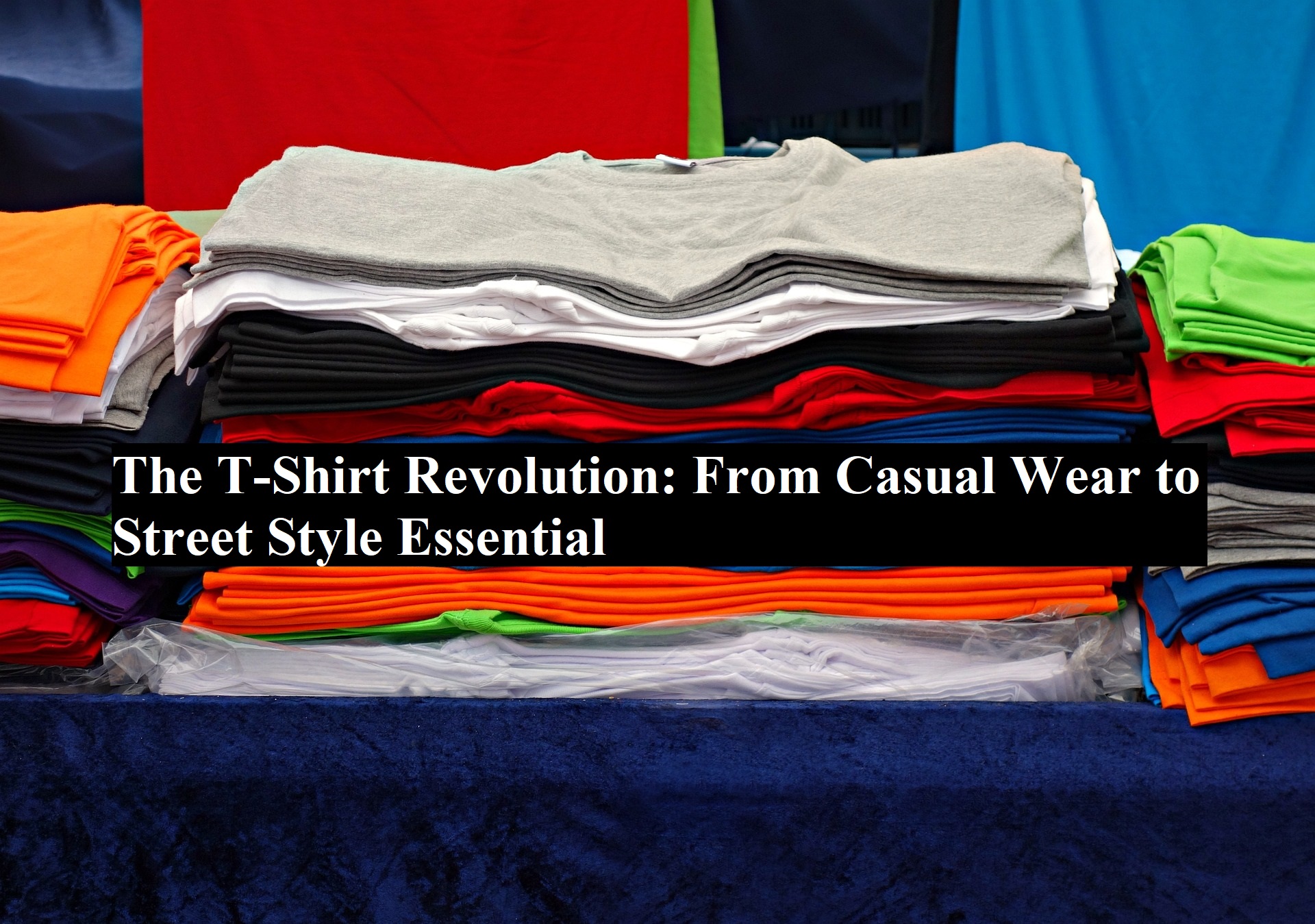The T-shirt, once a humble garment designed for utility, has transformed into a fashion staple and cultural icon. Its journey from basic undergarment to a central element of street style and high fashion illustrates its incredible adaptability and influence. This evolution reflects broader changes in society, fashion, and self-expression, marking the T-shirt as a key player in the modern wardrobe.
Origins and Early Evolution
The origins of the T-shirt can be traced back to the early 20th century. Initially, it was designed as a practical undergarment for laborers and military personnel. Its simplicity—short sleeves, a round neckline, and a lack of buttons—made it an ideal choice for comfort and ease of movement. The T-shirt was a basic, functional piece of clothing, often worn underneath more formal garments.
During World War II, the T-shirt gained widespread visibility as soldiers began wearing it as an outer garment in hot climates. Its association with casual wear started to solidify, but it wasn’t until the 1950s that the T-shirt began to emerge as a symbol of youth rebellion and nonconformity. The iconic image of James Dean wearing a white T-shirt in *Rebel Without a Cause* cemented the garment’s status as a symbol of youthful defiance and coolness.
The Rise of Graphic T-Shirts
The 1960s and 1970s were pivotal decades for the T-shirt. This period marked the rise of the graphic T-shirt, which allowed wearers to display personal beliefs, affiliations, and artistic expressions. The counterculture movement embraced the T-shirt as a canvas for political activism, with designs featuring protest slogans, peace symbols, and revolutionary imagery.
Music also played a crucial role in the T-shirt’s transformation. Bands such as The Beatles and The Rolling Stones began using T-shirts as merchandise, turning them into collectible items and popularizing band logos and album art on casual wear. The screen printing revolution of the 1970s made it easier to produce vibrant, detailed graphics, further cementing the T-shirt’s role as a form of personal expression.
The T-Shirt Meets High Fashion
By the 1980s and 1990s, the T-shirt had firmly established itself as a fashion statement. Designers began incorporating T-shirts into high fashion collections, challenging traditional notions of formality and elegance. Jean-Paul Gautier, for instance, used the T-shirt to play with gender norms and create boundary-pushing designs. Vivienne Westwood’s punk-inspired T-shirts brought a rebellious edge to the high fashion scene, reflecting broader shifts in the fashion industry.
During this era, the T-shirt also became a symbol of brand identity. High-end fashion houses began to produce their own lines of T-shirts adorned with logos and distinctive designs. This shift transformed the T-shirt from a simple garment into a symbol of status and exclusivity. Luxury brands like Gucci and Louis Vuitton embraced the T-shirt, further integrating it into the fashion elite’s wardrobe.
Read: The Importance of Accessories for Men
Street Style and Cultural Impact
As we moved into the 2000s, the T-shirt became a central element of street style. This era saw the rise of fashion bloggers, influencers, and social media, which played a crucial role in popularizing the T-shirt as a versatile fashion piece. Street style icons and fashionista began using T-shirts to make bold statements and create distinctive looks, combining them with everything from tailored blazers to distressed jeans.
The T-shirt’s role as a vehicle for cultural and social statements continued to evolve. It became a canvas for expressing support for various causes, from environmental activism to social justice. Graphic T-shirts featuring powerful slogans or designs related to contemporary issues allowed wearers to showcase their beliefs and affiliations in a visible, immediate way.
Sustainability and Ethical Fashion
In recent years, the T-shirt has become a focal point in discussions about sustainable and ethical fashion. The fast fashion industry, known for its environmental impact and labor practices, has prompted a shift towards more sustainable practices in T-shirt production. Brands are now focusing on eco-friendly materials, such as organic cotton and recycled fabrics, and adopting ethical production methods to reduce their environmental footprint.
Consumers are increasingly aware of the impact of their clothing choices, leading to a rise in demand for T-shirts made with sustainable practices. Brands that prioritize transparency and ethical standards are gaining traction, reflecting a broader movement towards responsible fashion consumption. This shift is redefining the T-shirt’s role, transforming it from a symbol of casual style into a statement of environmental and ethical consciousness.
The Future of the T-Shirt
The T-shirt’s journey from a basic undergarment to a fashion icon highlights its remarkable versatility and enduring appeal. As fashion continues to evolve, so too will the T-shirt. Advances in technology, such as smart fabrics and 3D printing, could introduce new dimensions to T-shirt design and functionality. The integration of technology into fashion promises to push the boundaries of what a T-shirt can be, offering new opportunities for innovation and creativity.
Moreover, the T-shirt will likely continue to reflect and influence cultural and social trends. Its ability to adapt to changing fashion landscapes ensures that it will remain a central piece in both casual and high-fashion wardrobes. The T-shirt’s role as a medium for self-expression and cultural commentary will persist, solidifying its place as a timeless and influential garment.
Conclusion
The blank T-shirts evolution from a basic garment to a fashion essential is a testament to its adaptability and significance. Its journey through various cultural and fashion trends reflects broader societal changes and underscores its role as a powerful form of self-expression. Whether as a casual staple, a high-fashion statement, or a platform for activism, the T-shirt continues to be a dynamic and influential piece of clothing. As it moves forward, the T-shirt will undoubtedly keep evolving, maintaining its status as a key player in the world of fashion and beyond.





